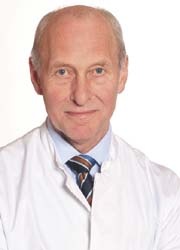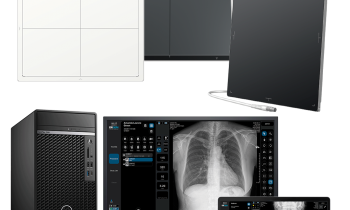What's on at the 88th German Radiology Congress?
Like any other congress, the 88th German Radiology Congress will present the latest research, workshops and refresher courses.

Neuroradiology and throat and head radiology will lead key subjects, because, Professor Ulrich Moedder, this year’s Congress President, told us, ‘…they emphasise the necessary dialogue between individual clinical disciplines and radiological diagnostics and therapy in an ideal way.’
Risk management and quality assurance in hospitals and surgeries will also be discussed. However, there are major transformations ahead, he revealed: ‘Our courses have been completely changed – and, for the first time, they’ve been designed around a three-year programme. During that period, the basics of radiology will be taught systematically. For doctors in training for a radiology qualification we offer a special training course called The basics of image analysis.’
In addition, on International Day at the congress, renowned radiologists from Europe and the USA will introduce current standards used in mamma-diagnostics and prostate- diagnostics. ‘So, the set-up of this year’s radiology congress has changed quite a lot,’ the professor pointed out.
Asked which research area he considers the most promising, Prof Moedder cited molecular imaging, which marks cells, or individual molecules, that are typical for a disease process and so hints at changes long before they can be detected via conventional imaging procedures. The congress will also discuss reports about the first positive effects of stem cell implants prior to the removal of liver tissue, he added. ‘In future these should make it possible to surgically remove liver tumours and metastases more effectively in a larger number of patients. Further developments in interventional, minimally invasive procedures in neuroradiology and general radiology are also very important.’
140 exhibitors will display products during the congress. Asked which innovations will draw the crowds, the professor referred to MRI. ‘The current focus is on improved and faster image processing. New iron oxide contrast media for MRI examinations will shortly be introduced to the market. It is hoped that they will detect metastases in the lymph nodes more precisely and will identify centres of inflammation in organs at a very early stage.
‘Functional MRI has been an important topic in recent years. The introduction of 3-Tesla equipment opened up and posed numerous new research opportunities and questions that, prior to this, had been unthinkable for technical reasons. Now 7-Tesla MRIs are available, significantly increasing these research opportunities. They provide ever new, fascinating details on the functioning of the human brain. All in all, new MRI technologies are used for considerable research.
‘The use of dual-source computed tomography in cardiac diagnostics is having quite a broad, positive effect on healthcare system. It facilitates a detailed examination of the heart without using catheters, in many cases making invasive cardiac diagnostic procedures obsolete. From this, we can expect a significant improvement in patient care.
‘In computed tomography the focus is on new machines with larger numbers of detectors that should increase spatial resolution even further, whilst lowering radiation exposure.
‘Rapid progress in stent and catheter technology have improved treatment options in interventional radiology and represent significant advantages for patients.’
Refresher courses and workshops
The very diversified topics and contents have been designed to fit a three-year period. Courses include paediatric radiology or neuroradiology, with others focused on procedures such as ultrasound scans, the professor explained. Training also will be provided in some of the increasingly important interventional procedures, e.g. carotid artery dilation.
Other highlights will include a highly interactive basic radiology course for doctors, and hands-on workshops in which new procedures, such as image-controlled therapies, can be practised on dummies. ‘The use of stents to treat constrictions of cerebral vessels, of the renal arteries and pelvic and leg arteries is attracting particular interest. Vertebroplasty – an interesting therapy option for osteoporosis patients – is also in the programme, and the courses will be rounded off with a chance to practise CT virtual coloscopy,’ the professor added.
Given the current glut of junior radiologists in Germany, we asked what the congress might do to stabilise this situation. ‘Attracting young doctors to radiology is an important and continuous process. It depends on the ability to communicate the outstanding perspectives of this medical discipline and on the ability to offer solid and structured training. Young doctors who decide to specialise in radiology must be given the chance to learn all aspects of in- and out-patient radiology during training. The German Radiology Congress acts as a role model, but the implementation should happen during daily routine in a hospital.’
Today radiology is an integral part of many therapies – particularly MIS. We asked what other areas are similarly developing and what the future holds for the interventional radiologist? ‘Procedures to open and close vessels are already integral parts of optimum patient care, such as dilation of cerebral vessels to prevent strokes, treatment of cerebral bleeds and treatment of smoker’s leg,’ Prof Moedder pointed out. ‘There are also many different possibilities for interventional radiology to treat back pain. Interventional radiologists can also administer local therapy for defined tumours, such as liver metastases, as well as to treat infections or abscesses in the lung or abdomen.
‘In the future, when we’re able to make diseases visible on a cellular level, we will be able to treat them earlier. So radiology will make an important diagnostic and therapeutic contribution towards patient care in various areas.’
16.05.2007











